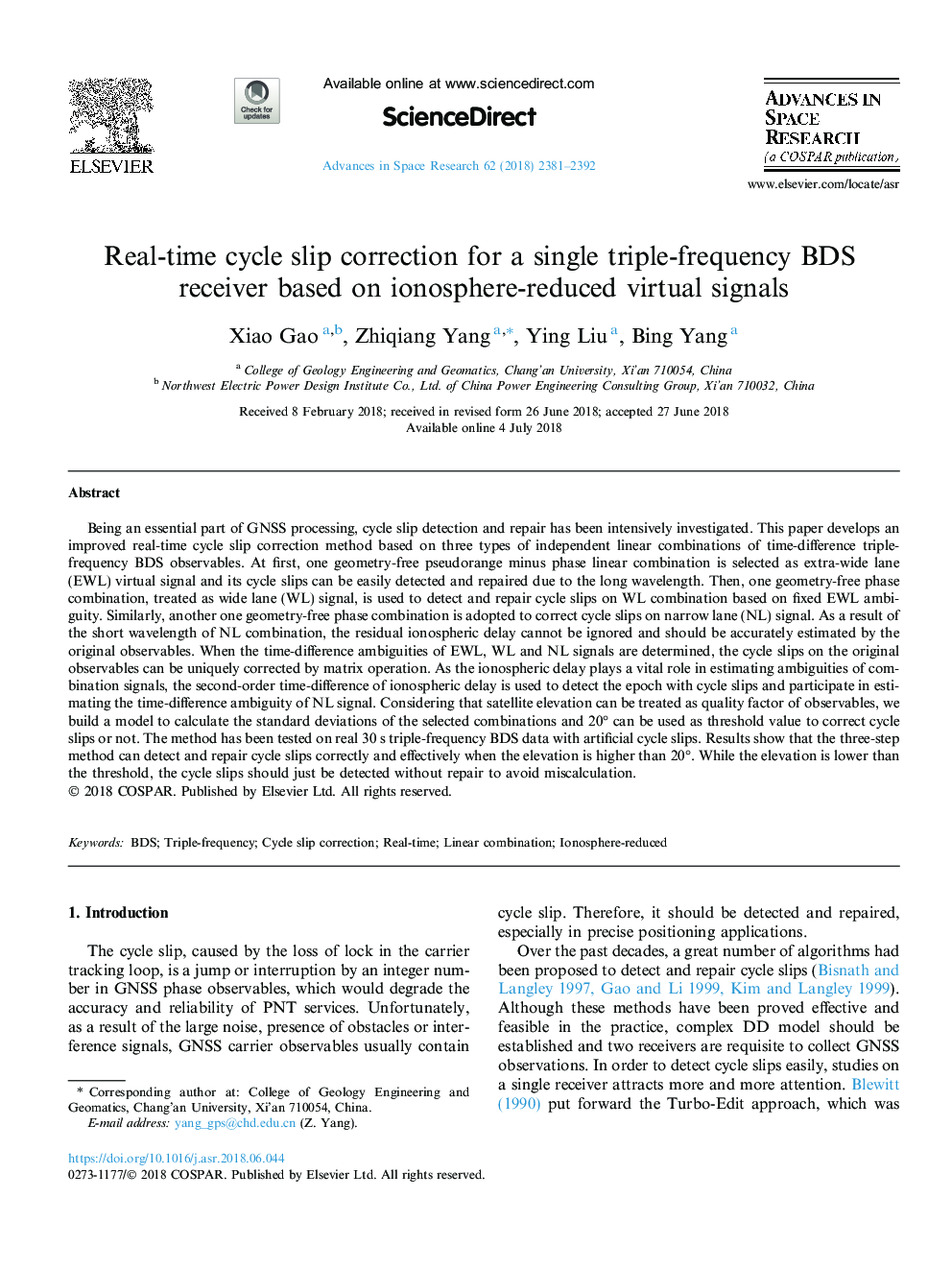| کد مقاله | کد نشریه | سال انتشار | مقاله انگلیسی | نسخه تمام متن |
|---|---|---|---|---|
| 11019675 | 1717623 | 2018 | 12 صفحه PDF | دانلود رایگان |
عنوان انگلیسی مقاله ISI
Real-time cycle slip correction for a single triple-frequency BDS receiver based on ionosphere-reduced virtual signals
دانلود مقاله + سفارش ترجمه
دانلود مقاله ISI انگلیسی
رایگان برای ایرانیان
موضوعات مرتبط
مهندسی و علوم پایه
علوم زمین و سیارات
علوم فضا و نجوم
پیش نمایش صفحه اول مقاله

چکیده انگلیسی
Being an essential part of GNSS processing, cycle slip detection and repair has been intensively investigated. This paper develops an improved real-time cycle slip correction method based on three types of independent linear combinations of time-difference triple-frequency BDS observables. At first, one geometry-free pseudorange minus phase linear combination is selected as extra-wide lane (EWL) virtual signal and its cycle slips can be easily detected and repaired due to the long wavelength. Then, one geometry-free phase combination, treated as wide lane (WL) signal, is used to detect and repair cycle slips on WL combination based on fixed EWL ambiguity. Similarly, another one geometry-free phase combination is adopted to correct cycle slips on narrow lane (NL) signal. As a result of the short wavelength of NL combination, the residual ionospheric delay cannot be ignored and should be accurately estimated by the original observables. When the time-difference ambiguities of EWL, WL and NL signals are determined, the cycle slips on the original observables can be uniquely corrected by matrix operation. As the ionospheric delay plays a vital role in estimating ambiguities of combination signals, the second-order time-difference of ionospheric delay is used to detect the epoch with cycle slips and participate in estimating the time-difference ambiguity of NL signal. Considering that satellite elevation can be treated as quality factor of observables, we build a model to calculate the standard deviations of the selected combinations and 20° can be used as threshold value to correct cycle slips or not. The method has been tested on real 30â¯s triple-frequency BDS data with artificial cycle slips. Results show that the three-step method can detect and repair cycle slips correctly and effectively when the elevation is higher than 20°. While the elevation is lower than the threshold, the cycle slips should just be detected without repair to avoid miscalculation.
ناشر
Database: Elsevier - ScienceDirect (ساینس دایرکت)
Journal: Advances in Space Research - Volume 62, Issue 9, 1 November 2018, Pages 2381-2392
Journal: Advances in Space Research - Volume 62, Issue 9, 1 November 2018, Pages 2381-2392
نویسندگان
Xiao Gao, Zhiqiang Yang, Ying Liu, Bing Yang,